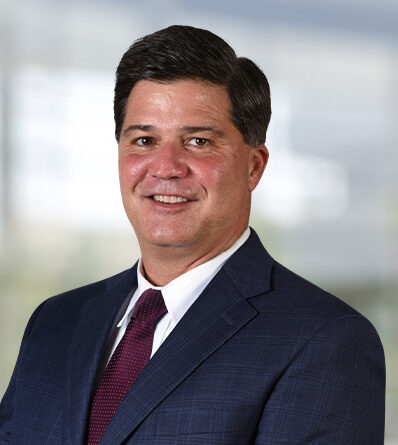Finding IP Value
What’s Fair is Fair: Recent Supreme Court Case Defines Ability of Innovator to Challenge Patent Rights It Sold

By: Stephen C. Hall
When the inventors of an endometrial ablation system – a device for treating abnormal uterine bleeding – made their invention in 1998, they likely were optimistic for an exit event, but they probably didn’t anticipate a Supreme Court case twenty-three years later based on their technology. Minerva Surgical, Inc. v. Hologic, Inc., 141 S. Ct. 2298, (June 29, 2021). The inventors and the company they had founded did achieve the sought-for exit: a $325 million dollar asset purchase in 2004. But at least one of those early inventors, Csaba Truckai (“Truckai”) would later form a new company, Minerva Surgical, that developed a new product used for the same purpose as the original product based on the patent rights that were sold. However, Truckai’s new company contended that it possessed freedom to sell its new product because its design was sufficiently different from anything that had come before.
The company that owned the rights to the original invention, however, thought differently. In 2015, that patent owner sued Truckai’s new company (Minerva Surgical) for patent infringement. The defendant, Truckai’s new company, defended on multiple grounds, including that the patent it was sued under (i) did not exist at the time the patent rights were sold in 2004, (ii) was based on a set of patent claims that did not come into existence until 9 years after that sale, and (iii) those patent claims were invalid. The owner of the patent rights then attempted to block the new company’s invalidity defense based on the doctrine of assignor estoppel.
At its root, assignor estoppel is about fairness and expectations. It prevents one who has assigned the rights to a patent, or in certain cases, a patent application from later attempting to invalidate that which was assigned. Assignor estoppel does not arise very often, but when it is applied, the doctrine can be extremely detrimental to the defense as it prevents any attack against the patent in court.
When patent rights are sold, there is an expectation by the buyer that the seller who innovated those rights will not later compete against the buyer with the same inventions that were sold. Yet as far as patent law is concerned, the innovator also has an expectation of being able to continue developing new and improved products – even ones that compete with the buyer’s business – provided the new and improved technology falls outside the boundaries of the patent rights that were sold.
In the case at hand, Minerva Surgical, the Supreme Court had to address a situation its own precedent had not encountered before. Namely, prior Supreme Court holdings had recognized the general rule that one who assigns a patent cannot later challenge the validity of that patent. However, this case did not involve a patent that was sold in 2004. Rather, a patent application was part of the portfolio sold in 2004. That patent application lived on in a number of different family members filed serially over the course of a decade. One of those later patent applications – considered the “great grandchild” of the patent application assigned – produced the patent asserted against Minerva Surgical. The claims in that patent were not before the Patent Office at the time of the 2004 assignment, and no litigation occurred until more than a decade after the transaction.
Thus, because a patent application was assigned and later blossomed into the patent in the case, the situation presented to the Supreme Court in 2021 was different from its earlier rulings. In this context, the Supreme Court held 5-4 that the doctrine of assignor estoppel still applies in litigation, but it is limited. The opinion identified three specific exceptions when it will not apply:
- when an assignment happens before invention occurs, such as with an employment agreement;
- when the attempt to invalidate would be inconsistent with a change in the law; and
- when the claims change and become materially broader after the assignment is made.
There are several contexts in which patent attorneys must understand the boundaries around assignor estoppel and provide effective client counseling in view of Minerva Surgical. Generally, patent lawyers and their clients will need to understand and apply this case in a litigation context – when there is a patent lawsuit – and in a transactional context, particularly when providing intellectual property diligence concerning an asset purchase agreement assigning a patent application. Broadly, if a patent application is sold, then the set of claims contained in that application are represented to be valid. An innovator who assigns such an application cannot later come back against any patent with claims that are the same or substantially similar to (i.e., not materially broader than) the claims in the application when it was assigned. But if the buyer were to take the patent application and draft entirely new claims or file a later application with entirely new claims claiming priority to what was assigned, and those new claims are materially broader than the patent application when it was assigned, then the seller would not be acting inconsistently by bringing a challenge to the subsequent patent.
As is the case of ten times in patent law, there are many layers and nuances beyond this broad statement of the holding in Minerva Surgical. But what must first be determined is the actual or potential existence of a conflict between the assignor’s representations or statements at the time of the asset purchase and a later defense by the same assignor attempting to invalidate patent claims assigned or arising from the rights that were assigned. Once the existence is determined, one will then consider the three exceptions set out above.
[1] This post was adapted from a presentation to the Midwest Intellectual Property Summit on December 2, 2021. The author thanks the Indiana Continuing Legal Education Forum for the opportunity to present.
